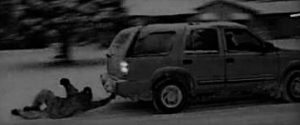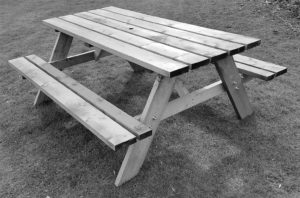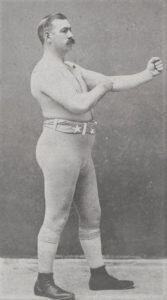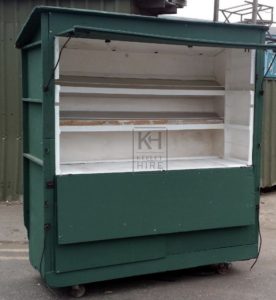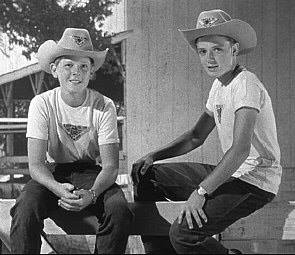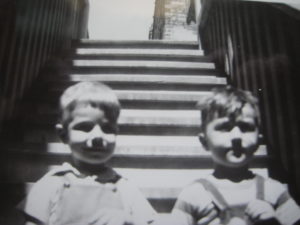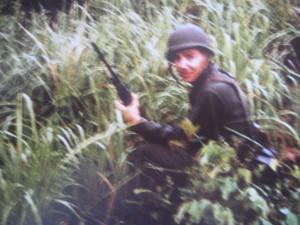Back in the late 1950s and early 60s, there were many toys available that could put a pre-teen in the hospital. I had most of them including a BBgun (rifle actually) which, when I was tired of hitting tin cans from the garbage, took aim at alley rats and squirrels, never hitting one. It was another toy that one day disappeared from my inventory. My father had a rule about toys and if they were left lying around, they were confiscated forever. The most dangerous, however, was not a toy but an automobile which was the main ingredient to a pastime we called skitching., which was a word, I believe, constructed from ski-hitching, and that is a fairly good definition of what we did.
Back then, skitching only took place in the winter after a good snow. Nowadays, it is a little different and can involve skateboards and bicycles, but in my day, it was wrapping your gloved hands around the rear bumper of a moving car and hanging on as long as you could.
Cars were built different then and the bumpers were chrome plated steel which extended out from the front and rear of the vehicle. There was room to place your gloved hand over the bumper and hang on for dear life. All went well unless you hit a drypatch and then you immediately were disengaged, usually tumbling or being dragged along the street until you let go.
Skitching was only good if the snow was packed down on the residential streets. Salt trucks hardly ever came down, spending most of the time on the busier main streets. As cars went along the snow laden streets, they would leave a rut and, after several cars, a nice snow packed rut was in place, ideal for your feet. Icy streets afforded one the option of any location along the rear bumper and could accommodate at least four kids. Most of the time, it was two, one on each side riding the ruts.
We were not informed too well of the dangers of skitching. Most of the time, since the street was icy or snow packed, drivers would be going fairly slow. Some were not aware of our clinging to the rear bumper (one objective of skitching was to accomplish your attachment to the vehicle without the driver’s knowledge), others would stop the car and yell out the window at us, while others, usually younger drivers, would sometimes swerve or speed up a little to give us a thrill (or perhaps it was a move to eject us from the bumper). No one I knew every got hurt skitching, but there were problems.
At times, your gloves would stick to the bumper and as you let go, your gloves would ride off into the sunset alone. I always wondered what the driver (or other drivers) thought when they saw the gloves dangling from the bumper! You could also lose a shoe if you hit the feared dry spot and, if you were fated to be dragged along the street, you might have to explain how you got so snow-laden and disheveled to your parents.
You could not skitch wearing rubber boots or galoshes so, at times, it was difficult to leave the house without getting stopped and be told to put on your boots. Sometimes, you would wear the galoshes and take them off once outside, and retrieve them later. It was difficult to explain how your shoes and socks got so wet under the galoshes, but we managed to elude the facts, when explaining – “I stepped into a puddle.”
I don’t think anyone of our parents found out we were skitching. I am certain if they did, the punishment would have been more painful then getting tossed into the curb or lamp post. Skitching only took place a few times during the winter and our involvement only around an hour as we look for a car to latch on to, making sure there wasn’t another one too close behind. We weren’t that stupid.
Or were we.
